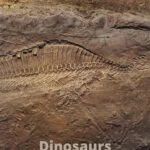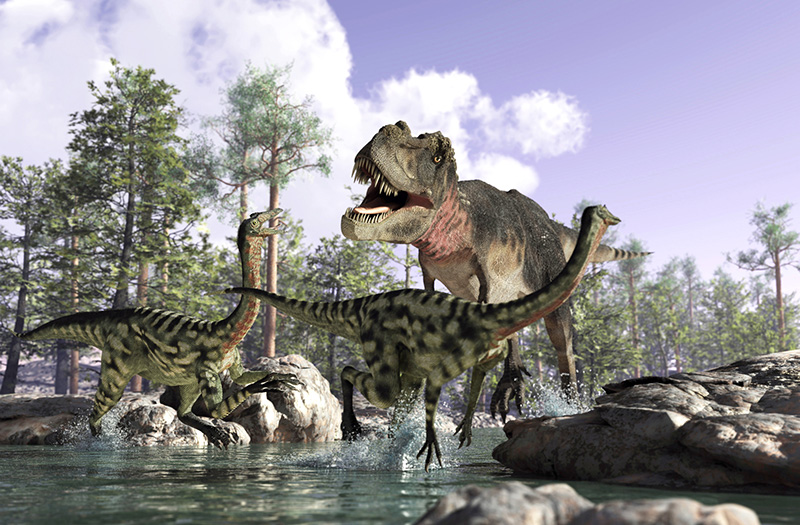
Long before Vikings roamed the earth, Scandinavia was home to some even more voracious hunters – dinosaurs!
Dinosaurs in Norway & Scandinavia? The region isn't known for its dinosaurs, but there is plenty of evidence that the creatures once roamed these lands.
Let’s take a deep dive into the region’s connection with these Jurassic beasts.
Table of Contents
A brief history of prehistory
Cast your mind back 240 million years, to the early Triassic period. The world looked much different from the one we inhabit today. Landmasses had converged to form Pangea. At this time, you could have driven from Oslo to New York by car – if you had existed and managed to build one!
Read more: Scandinavia Before the Vikings
The Permian-Triassic extinction – the greatest in Earth history – had ‘just’ taken place within the previous 20 million years. 90% of all life on Earth went extinct. Now, the Earth was starting to recover, and this is where the early ancestors of dinosaurs started to appear.
Over the following 180 million years, dinosaurs grew to dominate the Earth right up to the late Cretaceous period. Then, as you probably learned in school, an asteroid hit the Yucatan Peninsula in Mexico and the resulting chaos spelt the end for these magnificent creatures.
Fast forward to modern times and we are regularly discovering evidence of how and where the dinosaurs lived. The previous interconnected nature of almost all current landmasses means that we find fossils and bones everywhere. Dinosaur fossils and remains have been found on every continent, region and landmass in the world, including Scandinavia.
Dinosaur fossils in Norway & Scandinavia
It’s worth mentioning that when we think of fossils, we tend to think of large complete skeletons such as Dippy in the Carnegie Museum of Natural History in Pittsburgh and the cast of Dippy that stood for over 100 years in London’s Natural History Museum. Often, however, palaeontologists are working with much smaller samples.
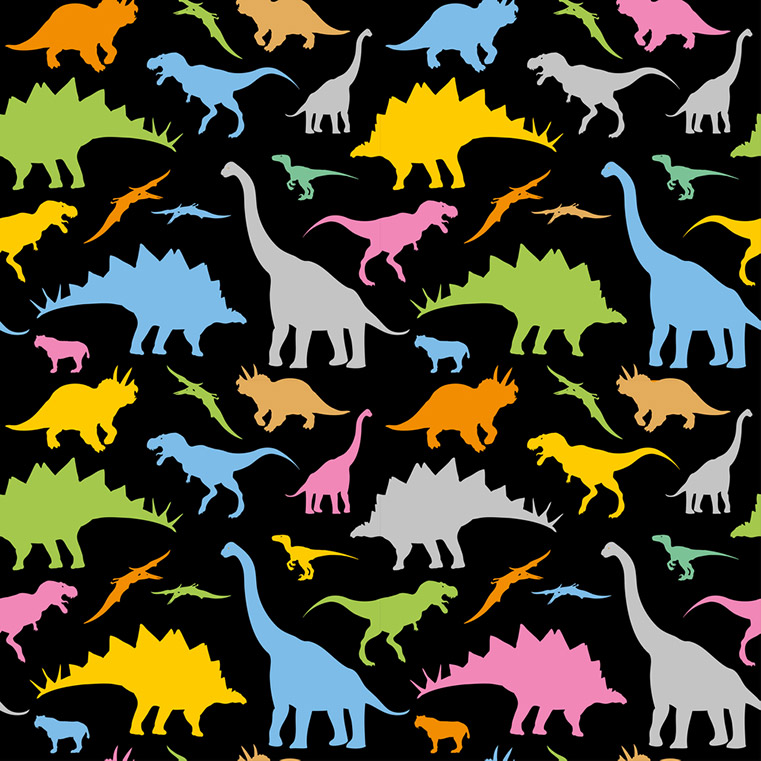
Sometimes, for example, fossil material comes in the form of a well-bore from an oil exploration of the ocean floor, where it would be impossible to excavate the whole site. Incredibly, scientists are able to take even small fragments such as this and work out which creature they belong to.
Read more: A Brief History of Norway
Overall, dinosaur fossil discoveries in Scandinavia are somewhat rare. A lot of the geology of the region predates the Triassic period, making it impossible to find dinosaur remains there. Also, a large percentage of the fossils discovered have yet to be fully identified or described.
There is, however, still plenty of evidence of the dinosaurs that roamed the lands and swam in the seas around Norway, Sweden and Denmark. Greenland is also known for a few fossil discoveries.
Skåne in Sweden and the islands of Svalbard and Bornholm (Denmark) are where we find the majority of the Scandinavian fossils. Let’s take a look and see what sorts of prehistoric creatures have been identified so far.
The Triassic period
As the oldest of the three major ‘dino times’, the Triassic period has the fewest remains discovered. We have amphibians such as Gerrothorax discovered in Skåne, Sweden and Plagiosternum on Spitsbergen, the main island of the Svalbard archipelago.
Various Branchiopods such as the Arctic Shield Shrimp have been discovered in all of the Nordic countries and fish such as Hybodus and Lepidotes have been found in Sweden and Denmark.
Read more: Fascinating Facts about Sweden
The only known mammal discovered in the Nordic countries from that time period was in Greenland. The small, shrew-like Kuehneotherium Praecursoris has been found extensively across Europe, taking advantage of the large continental landmass of Pangea to spread itself far and wide!
As for reptilian fossils, there’s a couple of different Grallator species that have been found in Skåne. The best-known dinosaur of the age, the Plateosaurus, has been found in Sweden, Norway and Greenland. This magnificent bi-pedal creature was in fact the first fossil to be found in Norway when it was discovered by workers drilling in the Snorre Oil Field in 1997!
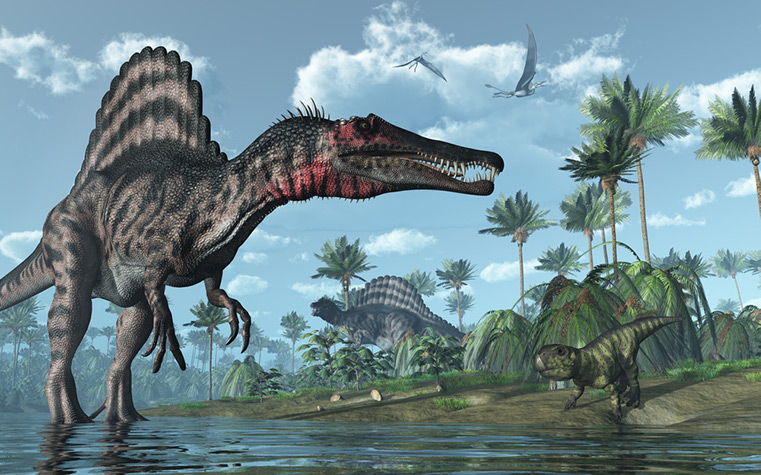
The Jurassic period
Stepping forward a few million years brings several more discoveries. We see the first plants in the fossil record in Sweden. In Norway we have fish and molluscs such as Leptolepis Nathorsti and Buchia.
Reptiles include more Grallator fossils in Sweden, joined by Dilophosaurus in Sala and Vallåkra, Sweden and Ichthyosaurus in both Sweden and Norway. Meanwhile, Bornholm in Denmark has given us an unknown sauropod that has been named Titansaurus. This herbivorous creature would have had a long neck and looked similar to the well-known sauropods like Diplodocus and Apatosaurus.
Svalbard also gives us a couple of important fossils from the period. Crypoclidus Svalbardensis was a marine reptile that may have looked similar to a seal but with a long neck and more prominent flippers.
Perhaps the most exciting discovery in Svalbard is of Pliosaurus funkei, known as Predator X. Discovered as part of a multi-season exploration from 2004-2012, P. funkei consists of two partial skeletons found south of Sassenfjorden. Predator X had a 2m long skull and a body of 10-13m making it one of the largest Pliosaurs yet discovered.
Many believe that its jaws would have been around 4 times stronger than even the T. rex, earning it the nickname Predator X.
The Cretaceous period
Finally, the cretaceous period – the Golden Age of dinosaurs – is where we find the majority of fossils in the region. We have the first prehistoric birds in Scandinavia’s fossil record, with the flightless, aquatic diving birds Baptornis and Hesperornis.
For fish we have the Ischyodus, similar to the modern Rabbit Fish Chimaera monstrosa, and Carcharius latus, similar to today’s Sand tiger sharks. There are also a great many unidentified or undescribed shark fossils from this period from Skåne including a Chondrichthyes – the same order as the Great White Shark!
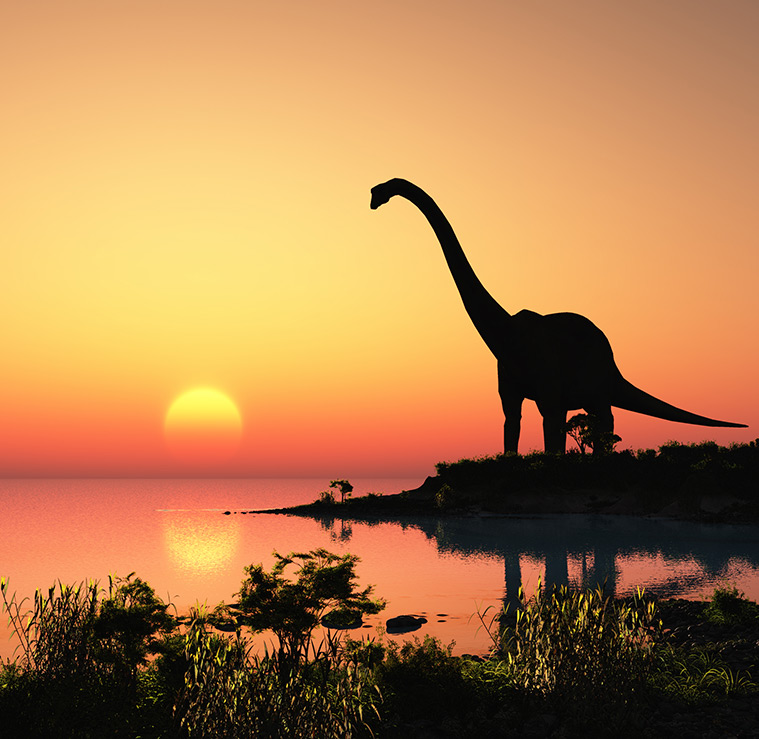
From Bornholm we have our second prehistoric mammal, an undescribed multituberculate that would be similar to today’s rodents. As always, it’s the reptiles where we see the best examples.
Dromaeosauroides Bornholmensis from Denmark is possibly the only known dromaeosaurid from the Lower Cretaceous in the whole of Europe. The only other example is described only from teeth and is considered dubious.
From both Norway and Sweden we have Iguanodon fossils. Iguanodon was the second dinosaur to be named and was originally one of three groupings, along with Megalosaurus and Hylaeosaurus that made up the Dinosauria.
Other highlights include Leptosaurus, Scanisuarus and a Mosasaurus – a large mouthed and long-tailed aquatic lizard, looking like a crocodile with flippers! There’s also a Pteranodon, Hypsilophodon and tooth evidence of an undescribed Tyrannosaur.
Did the vikings live with dinosaurs?
At first it might seem like an obvious, emphatic NO! But that’s not enough for some people. The field of Cryptozoology is a pseudo-scientific field of study dedicated to searching for and cataloguing evidence of ‘Cryptids’ – creatures from world mythology.
Such creatures include the commonly known ones such as the Lock Ness monster and the Yeti as well as lesser known creatures like the Altamaha-ha of Georgian legend.
The idea is pretty straightforward. Giant mythical beasts exist in folklore around the world so surely the idea must have come from somewhere? And how this might come about isn’t entirely impossible, even if it does seem a little far-fetched.
The extinction events that wiped out large percentages of life on earth during the various prehistoric ages may have killed off most of the dinosaurs but almost certainly didn’t kill them all off. A handful of prehistoric beasts could have survived as part of sheltered ecosystems that managed to thrive despite the adverse conditions.
Could some of the creatures of Norse mythology be dinosaurs that lived beyond their supposed timeline? While it’s unlikely and improbable, it isn’t entirely impossible. We may never know whether there is any truth to the myths and legends of our forefathers, but we’ll probably never rule it out entirely either!
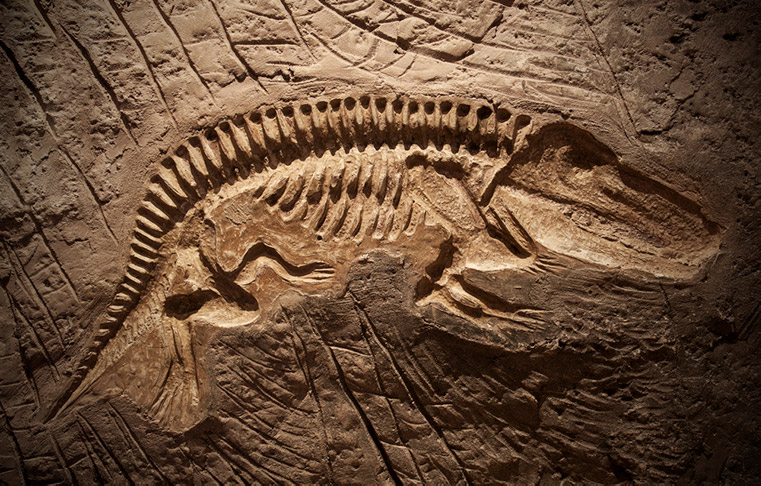
Dinosaur attractions
After the Great Exhibition at the Crystal Palace in Hyde Park, London in 1851, the enormous glass and steel structure was moved to Penge, where it stood until destroyed by fire in 1936. As part of the move, sculptures of Dinosaurs – a relatively new field of discovery – were commissioned to sit in the park.
Created by sculptor Benjamin Waterhouse Hawkins under the scientific direction of famed palaeontolgist Sir Richard Owen, the sculptures were unveiled in 1854 as the first dinosaur sculptures in the world. This was groundbreaking at the time and it helped spark mankind’s incredible obsession with these prehistoric creatures that has endured for the 160 or so years since.
Amazingly, the Crystal Palace Dinosaurs still stand today and while they’re significantly inaccurate due to what we have since discovered about dinosaurs, they gave rise to dinosaur attractions all around the world.
Dinosaur attractions in Norway & Scandinavia
Billing itself as the biggest dinosaur installation in Europe, A World of Dinosaurs in Tingby, near Kalmar, in Sweden is a popular tourist attraction. There are no actual dinosaurs here, but the models are lifelike and impressive and will keep children entertained for a few hours.
If you’re looking for actual fossils then the Natural History Museums of Stockholm, Oslo and Copenhagen are a good place to start. Each of these, along with the other museums of natural history in the countries, have fossils on display and informative dioramas about the development of life on earth.
And if you want to go hunting for fossils yourself then Denmark is one of the best places to go in the region. Stevns Klint, Mons Klint and the Island of Fur all make for great fossil hunting – they’re literally lying round everywhere! You can also hunt amber – the fossilised remains of tree sap – on the island of Fanø just off the coast of Esbjerg.
The Givskud Zoo dinosaur park has the country’s biggest dinosaur exhibition, with 26 significant species displayed around a large outdoor forest. This is also handily located near Billund, for perhaps the best family-friendly dinosaur encounter of them all.
Yep, the Lego House in Billund is home to Denmark’s most impressive dinosaurs. They may be made of plastic bricks, but the three giant models will delight any child! And as Lego is Denmark’s most famous export, enjoyed by kids and adults alike around the world, no visit to the country is complete without a trip there.
Tales From the Loop
Finally, we move from plastic bricks to paint and canvas. Simon Stålenhag is an internationally acclaimed Swedish artist and author.
One of his series of works, Tales from the Loop conjures a dystopian world set around a giant particle accelerator. Stålenhag imagines a world where the subterranean science causes some interesting phenomena above ground.
In the work we see dinosaurs roaming the human-centred world, as well as robots and androids in various states of use and decline. The pieces have been gathered together as a book and have also recently made their way onto the small screen.
Released on Netflix this year, Tales From The Loop is an anthology series of stories based on Stålenhag’s fictional world. I’ve not seen it yet, so I don’t know whether the dinosaurs made it from canvas to the screen. But it’s on my list to watch as soon as I find the time!
Did you enjoy this article? If so, why not share the Dino-love on Pinterest so others can find it too? Just hit the social sharing button for the perfect pin.

